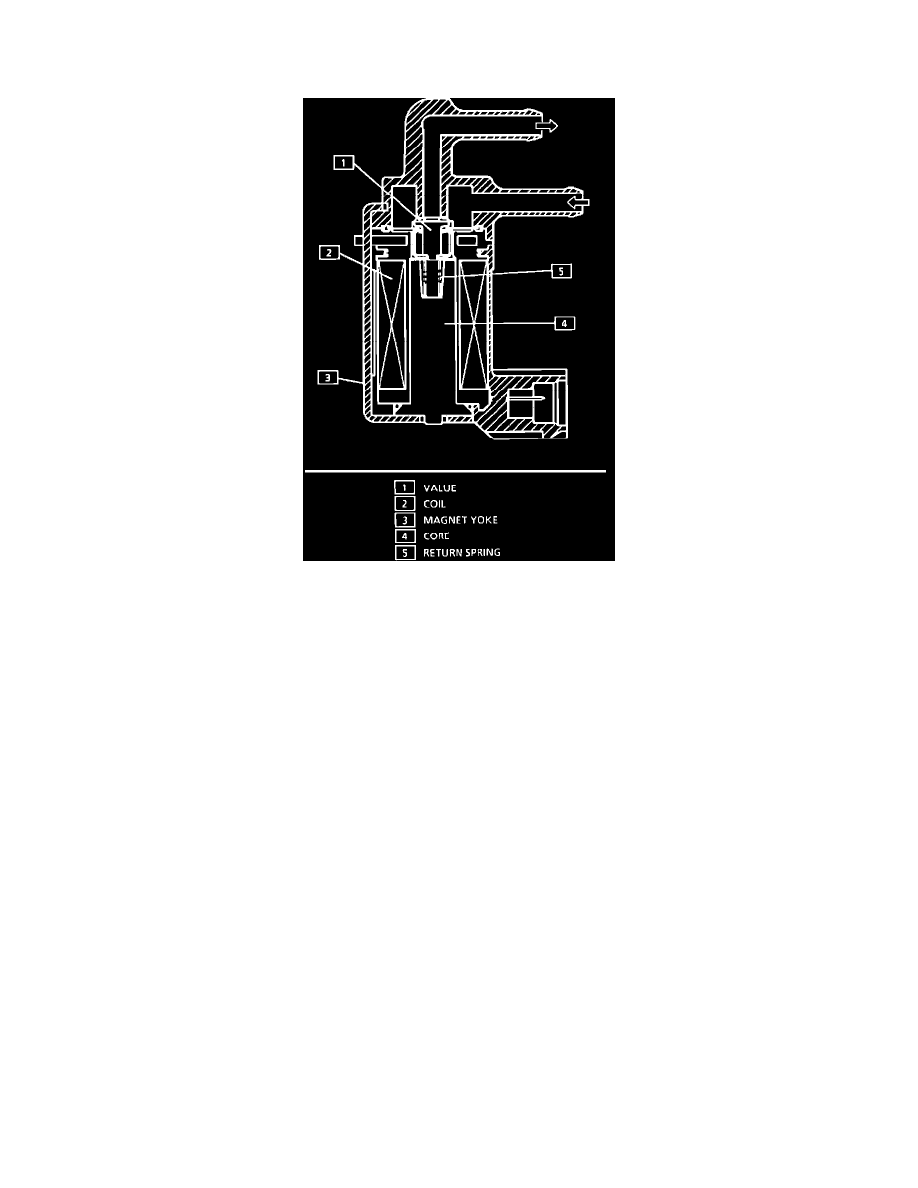Metro L3-61 1.0L (1990)

Idle/Throttle Speed Control Unit: Description and Operation
Idle Speed Control (ISC)
ISC Solenoid Valve Cross-Section
Engine idle speed is controlled by the ECM through the idle speed control (ISC) solenoid valve which allows more/less air to bypass the throttle valve.
The reasons for idle speed control are:
^
To keep the engine idle speed as specified at all times. The engine idle speed can vary due to the following reasons:
-
Load applied to engine (when electric load is applied, automatic transmission is shifted to "R," "D," "2" or "L" range, air-conditioner is
turned "ON," etc.)
-
Variation in atmospheric pressure.
-
Change in engine itself with passage of time.
-
Other factors causing idle speed to change.
^
To improve starting performance of engine.
^
To compensate air/fuel mixture ratio when decelerating (dash-pot effect).
The ISC solenoid valve opens the bypass air passage when it is turned "ON" by ECM and closes it when turned "OFF." The ECM detects the engine
condition by using signals from various sensors and switches and while repeating "ON" and "OFF" cycle of ISC solenoid valve at a certain rate (12 times
a second), it controls bypass air flow by increasing and decreasing its "ON" time within a cycle. While the engine is cranking, the ECM keeps ISC
solenoid valve "ON" so as to obtain better start of the engine. After the engine has started, it reduces "ON" time gradually to maintain the idle speed as
specified.
When the accelerator pedal is depressed (throttle valve is at other than idle), the ECM keeps the ISC solenoid valve "ON." When decelerating, on the
other hand, it reduces its "ON" time gradually (thereby reducing the bypass air now gradually) to adjust air/fuel mixture to an optimum ratio for
combustion. When the car is at a stop, the throttle valve is at the idle position and the engine is running, ECM controls the bypass air flow by increasing
or decreasing "ON" time of the ISC solenoid valve so that the engine speed is kept at a specified idle speed. With an air-conditioner equipped car, when
the air-conditioner is "ON," a certain amount of the bypass air is supplied by the air-conditioner Vacuum Switching Valve (A/C VSV) independently of
the ISC valve bypass air circuit. The A/C VSV bypass air is used for fine control of engine idle speed.
The A/C Vacuum Switching Valve automatically adjusts the engine idle speed to specification by means of the ECM. If such specified idle speed is not
available, it is necessary to adjust the basic idle speed with the idle speed adjusting screw. See "Idle Speed/A/C VSV Adjustment Procedure" under
"ADJUSTMENT PROCEDURES."
